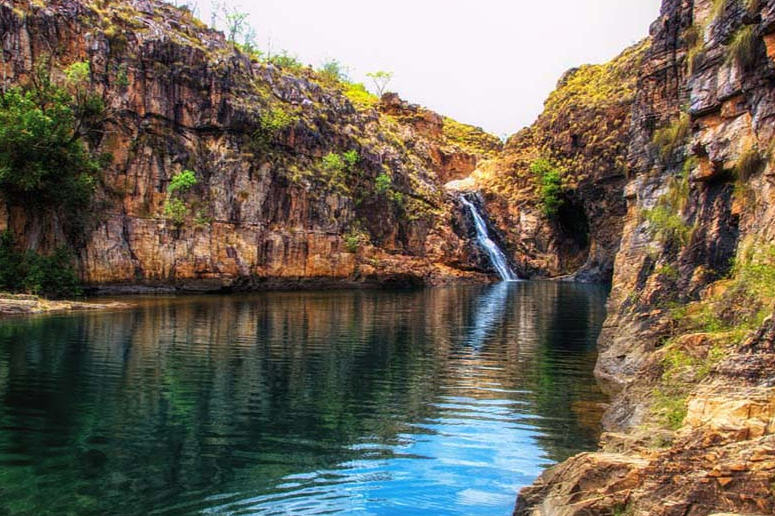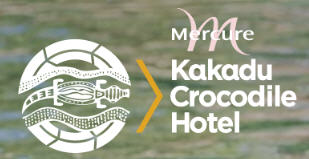
Blog:WGS-B0006
Country:Australia, Northern Territory
City/Region:Kakadu National Park
Interest:Nature & Waterfalls
Best Time to Visit:May-September
Nearest Airport:Darwin International Airport (DRW)
Table of Contents
Kakadu bird sounds guide
Let the vibrant birdlife of Kakadu National Park be your guide. Listen for the raucous call of a black cockatoo, its piercing cry echoing through the rainforest. Identify the cheerful chirping of a honeyeater flitting among the blossoms. Follow the rhythmic tapping of a woodpecker in search of insects. At dusk, hear the haunting wail of a curlew and the gentle hooting of an owl. The sounds of Kakadu’s birds create a symphony of the wild, immersing you in the park’s rich biodiversity.

Kakadu Aboriginal culture

Discover the enduring traditions of Kakadu’s Aboriginal people, the Bininj/Mungguy, whose connection to this land stretches back over 65,000 years. Listen to elders share Dreamtime stories, their voices weaving ancient wisdom and spiritual beliefs. Experience the rhythm of traditional dance and the evocative melodies of the didgeridoo, a deep resonant sound that evokes the heartbeat of the land. Learn about bush tucker and traditional hunting techniques, understanding the intimate relationship between the Bininj/Mungguy and their environment. Witness the intricate patterns of traditional art, where symbols and colors embody knowledge passed down through countless generations.
Kakadu hidden waterholes
Escape the crowds and discover the tranquility of Kakadu’s hidden waterholes. Feel the cool, refreshing water against your skin as you immerse yourself in a secluded swimming hole. Listen to the gentle murmur of a waterfall cascading over smooth rock formations. Breathe in the fresh, humid air, filled with the scent of tropical vegetation. Let the lush surroundings envelope you in a cocoon of serenity. Kakadu’s hidden waterholes offer a sensory escape, a place to reconnect with nature and experience the park’s untamed beauty.

Kakadu dry season walks
Explore the rugged beauty of Kakadu National Park during the dry season. Trek across sun-baked earth, feeling the cracked ground beneath your feet. Admire the stark contrast of parched grasses against vibrant blue skies. Walk through forests of towering termite mounds, their smooth clay surfaces weathered by the elements. Discover hidden rock pools and cascading waterfalls, their presence a refreshing contrast to the arid landscape. Kakadu’s dry season creates opportunities to experience the Park’s unique textures and resilient ecosystems.
Kakadu Aboriginal art textures
Explore the captivating textures of Kakadu’s Aboriginal rock art. Trace the raised lines of ochre paintings on ancient rock walls, feeling the stories etched into the sandstone. Discover the smooth, polished surface of a rock carving, worn smooth by countless generations of touch. Admire the intricate textures of woven pandanus baskets and the delicately carved surface of a didgeridoo. Kakadu’s Aboriginal art engages not just your sight, but your sense of touch, offering a tactile connection to the land and its rich cultural heritage.
Kakadu wildlife at night
Experience the nocturnal transformation of Kakadu National Park. As darkness falls, a new world awakens. Listen to the rustling of nocturnal creatures emerging from their burrows. Catch the piercing calls of hunting owls and the eerie screech of a nightjar. Feel your senses heighten as you navigate the park under the soft glow of moonlight. Spot the glint of eyes in the torchlight, revealing the secretive world of possums and other nocturnal creatures. Kakadu at night offers a unique symphony of sounds and a thrilling sensory adventure.
Kakadu ancient rock formations
Touch the timeless majesty of Kakadu’s ancient rock formations. Run your fingers over the weathered sandstone cliffs, sculpted by millions of years of wind and water. Admire the intricate patterns of erosion, their textures telling tales of geological forces that shaped this land. Explore hidden caves and overhangs, imagining generations of Aboriginal people who found shelter and created stunning rock art within these natural canvases. Kakadu’s ancient rock formations offer a tactile connection to the park’s immense history.
Kakadu billabong exploration
Immerse yourself in the unique ecosystem of a Kakadu billabong. Dip your toes into the cool water, feeling the soft mud squish between your toes. Drift on a boat, letting the gentle rocking and the rhythmic splash of oars lull you into a relaxed state. Hear the calls of waterbirds, their cries echoing across the still water. Watch as dragonflies dart across the surface and marvel at the delicate beauty of water lilies. A billabong exploration offers a soothing sensory journey, showcasing Kakadu’s vibrant wetlands.
Things to Do
- History Buff: Discover ancient rock art sites like Nourlangie and Ubirr, learn about Aboriginal culture at Warradjan Aboriginal Cultural Centre, and embark on a ranger-guided tour to unravel the secrets of the past.
- Nature Enthusiast: Hike through monsoon forests, swim in crystal-clear pools beneath waterfalls, take a scenic flight over Kakadu’s wetlands teeming with birdlife, or go croc-spotting on a thrilling Yellow Water cruise.
- Adventure Seeker: Challenge yourself with a 4WD adventure through rugged terrain, kayak through crocodile-free waterways, or climb the mighty Ubirr rock for panoramic views.
Exploring Beyond Kakadu:
- Nitmiluk National Park: Hike through dramatic gorges carved by the Katherine River, explore ancient rock art sites, and marvel at Aboriginal fish traps.
- Litchfield National Park: Cool off in cascading waterfalls, witness the magnetic termite mounds, and discover hidden swimming holes nestled in the bush.
- Darwin: Visit the vibrant capital city, delve into its World War II history, explore museums and art galleries, and enjoy fresh seafood at the waterfront.
Nearest Airport and Best Time to Visit
Getting There:
Darwin International Airport (DRW)
Flight hubs are at Darwin and Alice Springs, from there, choose whether you hire a vehicle or jump on a tour to get to the park.
Best Time to Visit:
The dry season (May-September) offers sunny skies, ideal for hiking and exploring waterfalls. However, the wet season (October-April) transforms the landscape, revealing cascading waterfalls and abundant wildlife. Croc-spotting cruises operate during the wet season only.
Additional Tips:
- Respect the land and its custodians. Leave no trace and adhere to cultural sensitivities.
- Purchase a Kakadu National Park pass for access to most sights and activities.
- Be aware of crocodile and other wildlife presence, and only swim in designated areas.
- Pack for the climate, including swimwear, sunscreen, and insect repellent.
Embrace the spirit of Kakadu and be prepared for an unforgettable journey through a land where ancient stories echo in the waterfalls and the timeless connection to nature endures.
Want to get in touch with us?
Questions you might have for this Blog
Feel free to ask questions.
General Questions:
If you have noticed any information that is not accurate, please let us know.
An Advertiser:
Your ads will be in the section below “Ads for Businesses”. Please also refer to the Subscription Plans tab.
For ads we would prefer your website presence where you would maintain your B2B price, deals or promotions etc. A control number link will connect to advertisers website.
Book Air and Hotel (Check for deals in our Ad Section below)

Travel Insurance

- InsureMyTrip : (https://www.insuremytrip.com/) This is a well-known online platform that allows users to compare and purchase travel insurance from various providers.
- TravelGuard https://www.travelguard.com/) TravelGuard is a reputable company that offers comprehensive travel insurance plans and is often cited as a reliable source for purchasing travel insurance.
- Squaremouth https://www.squaremouth.com/) Squaremouth is an authoritative website for comparing travel insurance policies and obtaining quotes from different providers, making it a valuable resource for travelers seeking coverage.
Business Ad Section - This may include deals or promotions.
Kakadu National Park History
Aboriginal Heritage
- Continuous Occupation: Aboriginal people have lived in Kakadu for at least 65,000 years, one of the longest continuous cultural traditions on Earth.
- Rich Rock Art: Over 5,000 rock art sites document changing lifestyles, spiritual beliefs, and adaptations to the environment over millennia.
- Living Culture: Bininj/Mungguy people are the traditional owners and their culture remains strong and connected to Kakadu’s landscape.
European Exploration and Colonization
- Dutch Explorers: The first recorded European contact was by Dutch explorers in the 17th century.
- Ludwig Leichhardt: Prussian explorer who passed through the region in 1845, naming features like the Alligator Rivers.
- Buffalo Hunters: Mid-19th century saw buffalo hunters arrive, negatively impacting Aboriginal populations and the environment.
- Pastoral Attempts: Cattle grazing and other settlements were largely unsuccessful due to the challenging environment.
Conservation Recognition
- Aboriginal Reserve (1964) and Wildlife Sanctuary (1972): Recognition of the area’s significance for both Aboriginal people and its unique ecosystems.
- Kakadu National Park (1979): Formal establishment of the park in stages throughout the 1980s and ’90s.
- UNESCO World Heritage Listing (1981): Acknowledgment of the outstanding cultural and natural value of Kakadu on a global scale.
Modern Era
- Joint Management: Kakadu is jointly managed by Parks Australia and the traditional Aboriginal owners, ensuring their voices and knowledge guide park decisions.
- Mining Controversies: Uranium mining has occurred within the park boundaries, with ongoing debates about environmental and cultural impacts.
- Tourism Hub: Kakadu is a popular destination for experiencing Aboriginal culture, stunning landscapes, and diverse wildlife.
Important Considerations
- Kakadu’s history isn’t just a timeline. It’s a complex story of deep connection to the land, the impacts of colonization, and the ongoing efforts for conservation and recognition of cultural rights.
- Visiting Kakadu responsibly means learning about its Aboriginal heritage and supporting the efforts of the Bininj/Mungguy people.
Resources for further exploration:
- Kakadu National Park website: https://parksaustralia.gov.au/kakadu/
- UNESCO World Heritage Listing: https://whc.unesco.org/en/list/147/
Some interesting facts
The park is a living cultural landscape. Its archaeological sites record the skills and way of life of Aboriginal people over tens of thousands of years. Kakadu’s rock art documents Indigenous creation stories and makes up one of the longest historical records of any group of people in the world.
With a whole week in Kakadu National Park you’ll have plenty of time to get to know this diverse and magical part of the Northern Territory. Learn the ancient stories and traditions of Australia’s oldest living culture and immerse yourself in the high calibre of Aboriginal art in the region.
Kakadu National Park is the jewel of the Northern Territory’s Top End. Its awe-inspiring landscapes and rich living culture attract visitors from across Australia and the world. The region is a UNESCO World Heritage-listed site, dual-listed for both its outstanding nature and culture.
In Australia’s biggest national park you’ll find rugged escarpments, lush rainforest and rock art galleries up to 20,000 years old. Learn about Aboriginal culture from Traditional Owners, the Bininj/Mungguy people, take in thundering waterfalls and witness millions of migratory birds among the wetlands.
This is the cold time – at least by Northern Territory standards. Humidity is low, while daytime temperatures are around 30°C and drop to about 17°C at night.
From campgrounds you may hear dingoes howling at night, or glimpse them as you travel through the park. These canines are thought to have reached Australia in the company of humans about 5 000 years ago. About one-third of all Australian bats are found in Kakadu.
The rivers and wetlands of Kakadu are buzzing with mosquitoes and flies all year round.
Kakadu is a scenic three-hour drive from Darwin on sealed roads that are passable year-round.


